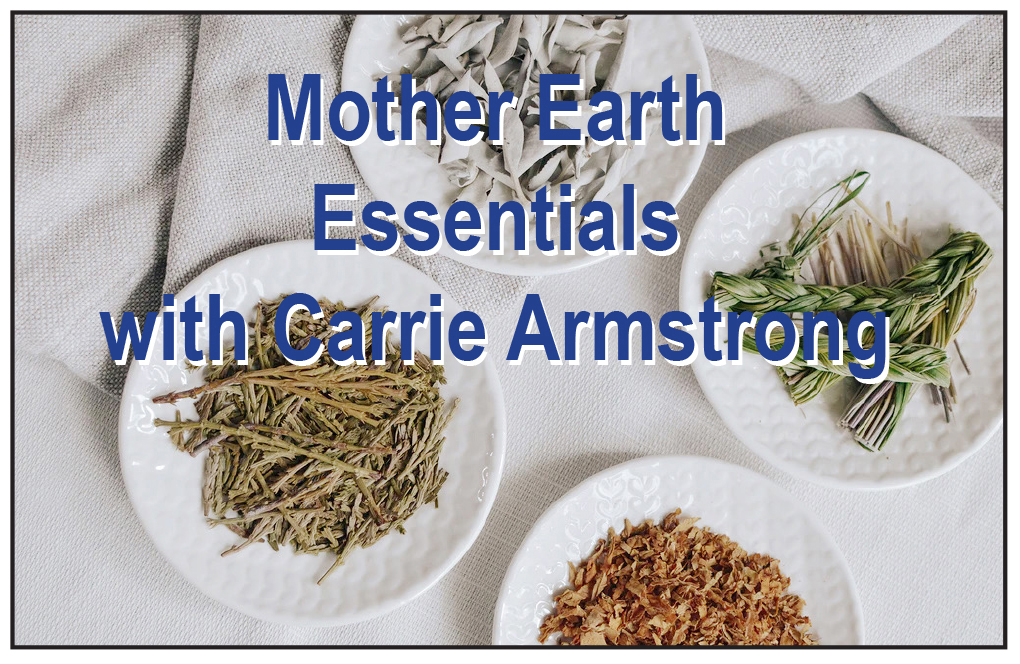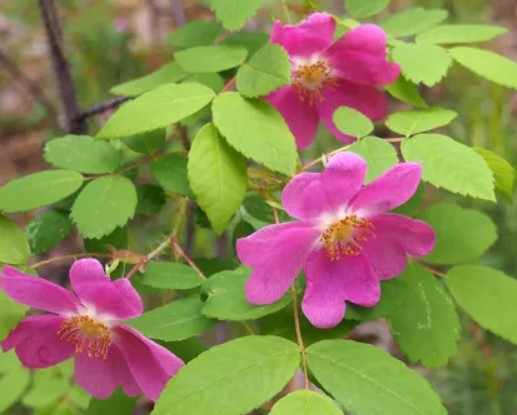
By Carrie Armstrong
Carrie Armstrong is from Michel First Nation in Alberta. She's a teacher and the founder of Mother Earth Essentials. In 2020, Carrie published her book Mother Earth Plants for Health & Beauty: Indigenous Plants, Traditions and Recipes with Eschia Books. Carrie is reflective of her own teachings. There are many different teachings and variations.
Okiniyak | Wild Rose (Hips) | Rosa acicularis
The wild rose is a lovely and delicate plant that many Indigenous communities around the world hold dear. It's valued for its healing properties and symbolic significance and has been used for generations as a traditional medicine by Indigenous peoples.
The petals from the flowers can be made into an infusion that can help treat eye conditions such as pink eye. Later in the fall, when the petals have dropped and the rosehip forms, we can use it in a tea that is very high in vitamin C, which is why they were known to help defend against and treat colds. The cold pressed oils from the rosehip seed can be used as a beautiful facial oil to reduce lines and wrinkles.
The wildrose is a deciduous shrub that typically grows in temperate regions of the Northern Hemisphere. It is characterized by its fragrant pink or white flowers with five petals and serrated leaves. The plant produces red or orange rose hips, which are the fruit of the plant and are rich in vitamin C and other nutrients. It is edible, but be sure not to eat the dry inner seeds, which can irritate the digestive tract. Some of us may have heard that the rosehip is called “itchybum” plants for this reason!
Indigenous peoples have long recognized the healing properties of the wildrose plant. The rose hips, in particular, are known for their high vitamin C content, making them a valuable natural source of this essential nutrient. Vitamin C is important for immune function, skin health and overall well-being.
In addition to being rich in vitamin C, rose hips contain antioxidants, such as flavonoids and carotenoids, which help protect cells from damage caused by free radicals. These antioxidants are believed to have anti-inflammatory and anti-aging properties, making rose hips a popular ingredient in skincare products and herbal remedies. At Mother Earth Essentials, we use rosehip seed oil in our facial skincare line.

1. Immune Support: The high vitamin C content of rose hips makes them a valuable resource for boosting the immune system and preventing illness, especially during the cold winter months.
2. Digestive Health: Indigenous peoples have used rose hips to aid digestion and relieve gastrointestinal issues, such as indigestion and stomach cramps.
3. Skin Care: Rose hip oil, extracted from the seeds of the rose hips, is used topically to promote skin healing, reduce scarring, and hydrate the skin. It is also believed to have anti-inflammatory properties that can help with conditions like eczema and acne.
4. General Well-Being: The wild rose plant is also valued for its symbolic significance and spiritual healing properties in many Indigenous cultures. It is seen as a symbol of love, beauty, and harmony with nature.
The plant typically flowers in late June, and you can collect petals and lay them out on a towel to dry. They will shrivel up quite a bit, so you will need to pick quite a few! Later in the season, usually later September, the flowers will have turned into the rosehip fruit that you can also dry to use in teas. The fresh rosehip can also be used as tea or to make jelly.
The wild rose plant is a really important traditional Indigenous medicine. We've known about its healing powers for a long time and have used it to treat all sorts of health issues. Whether it's giving your immune system a boost or keeping your skin healthy, the wild rose is highly valued for its health benefits and cultural meaning. It's a great example of the valuable wisdom and knowledge that indigenous communities have passed down through the years as we keep discovering the healing properties of natural remedies.
Editor’s Note: As Carrie says, it’s important to be well informed about any plant medicine that you choose to use and how it will affect your own body. Do your own research.
When picking plants for your own use, please pick with care, ensuring you correctly identify the plant prior to use. Take only what you need. Break leaves, flowers, stems off gently as opposed to pulling out by roots.
Please be aware that you pick in a safe, chemical-free area and know that some plants can be toxic at certain times of year. Do not gather any endangered species of plants.
In some Indigenous cultures, tobacco is offered to Mother Earth as a way of showing gratitude for the medicines.
